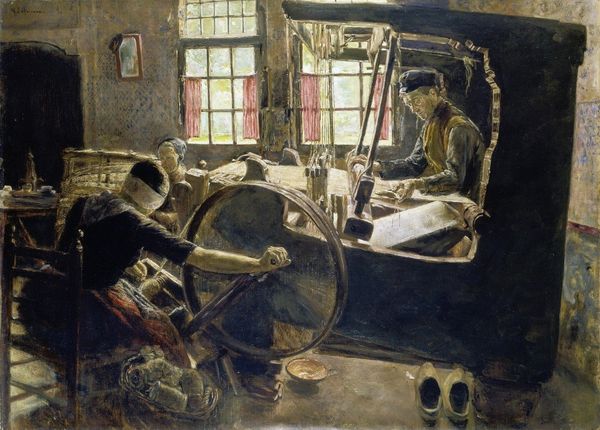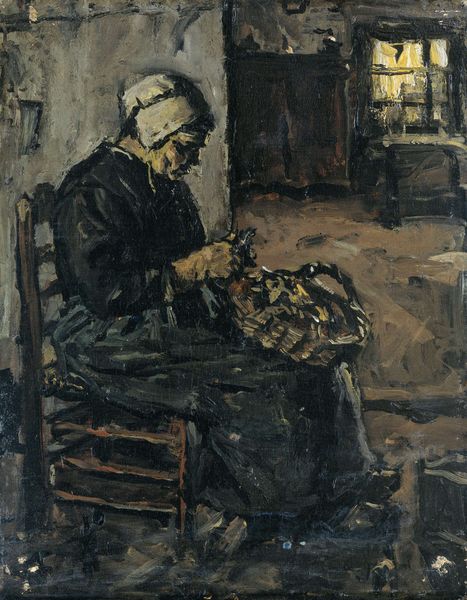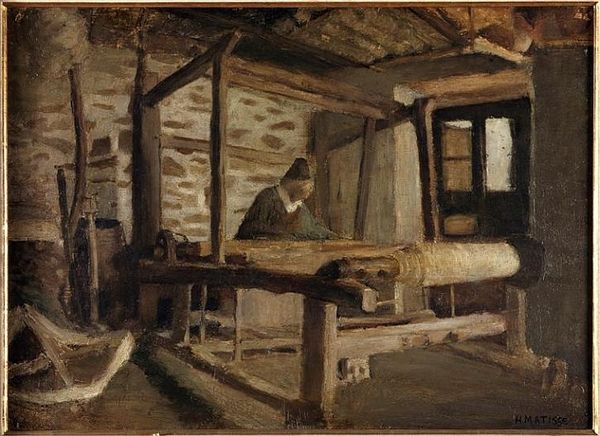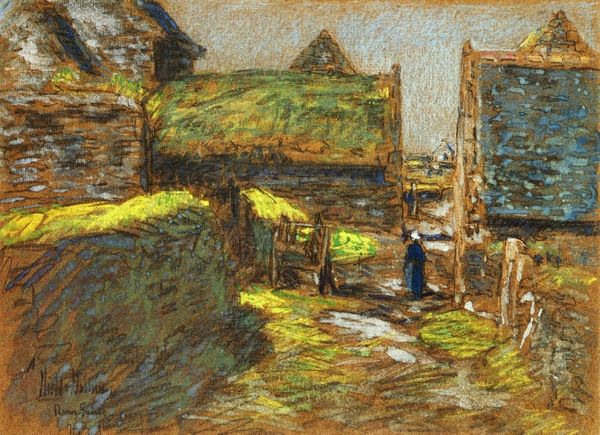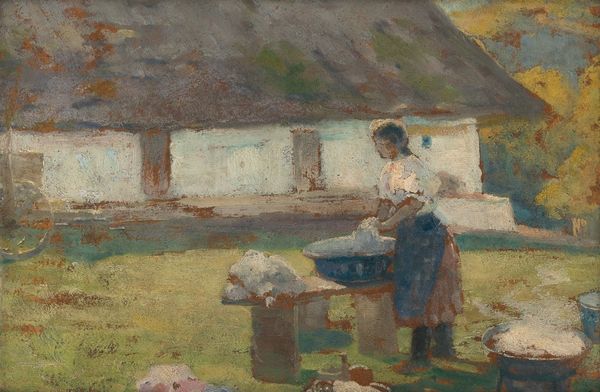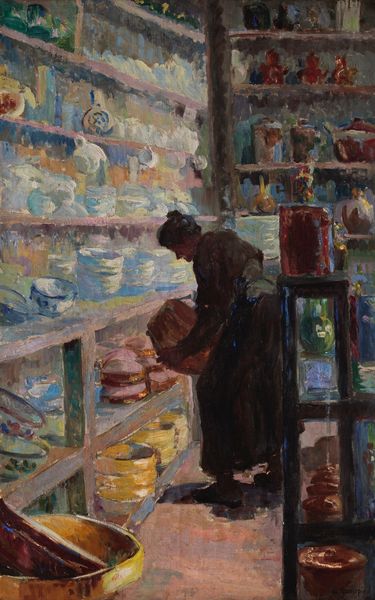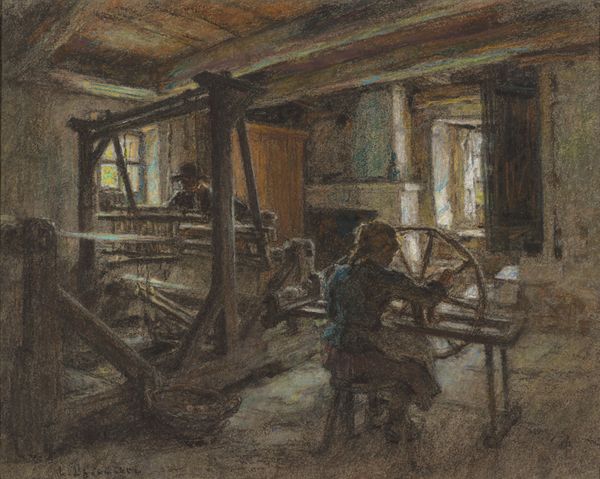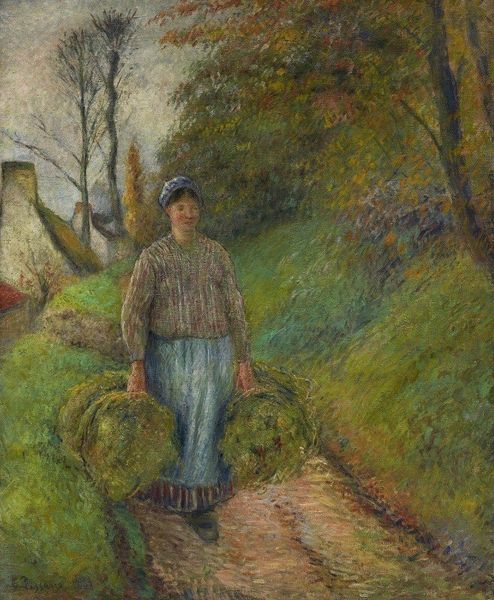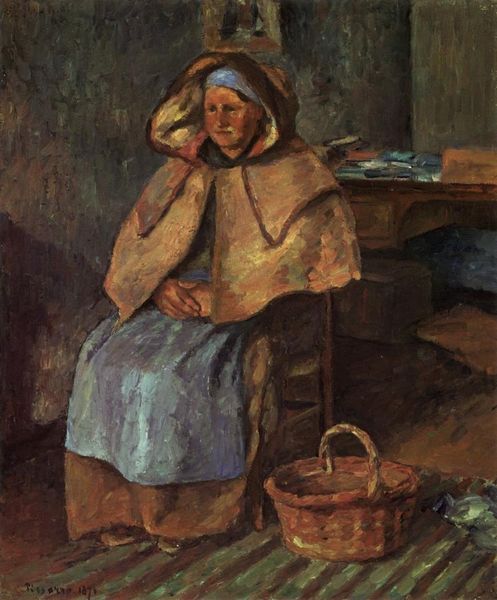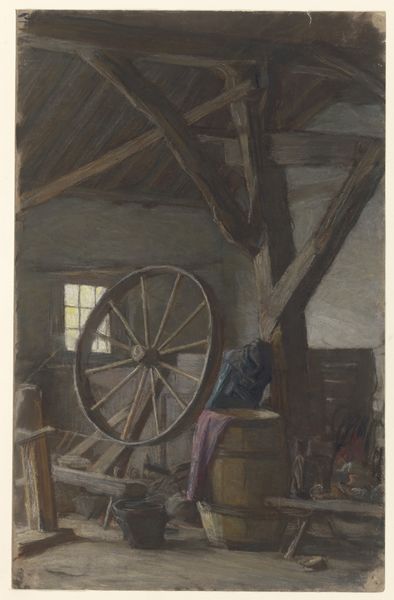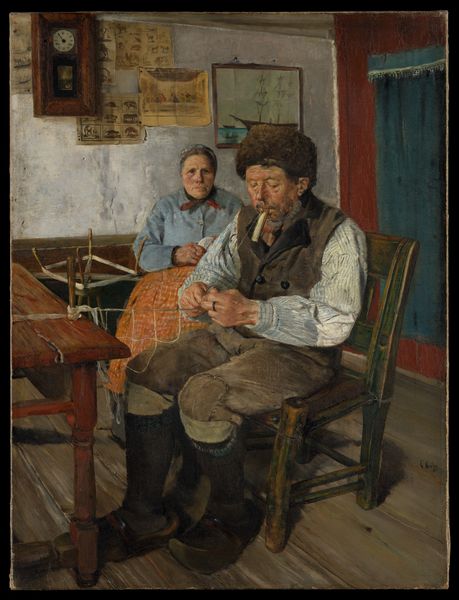
Copyright: Public Domain: Artvee
Curator: Maximilien Luce's painting, "Le Rémouleur," created around 1907, captures a fleeting moment. It’s rendered in oil paint, showcasing a specific genre scene of the time. What’s your initial reaction? Editor: The prevailing color seems to evoke a certain gloominess, perhaps mirroring the repetitive and laborious nature of the man’s work. I'm also struck by the texture. Curator: Luce, a figure associated with Post-Impressionism, demonstrates that connection through broken color. Notice how distinct touches of paint construct form. It emphasizes materiality, highlighting how color interacts to form our perceptions. Editor: Beyond its form, Luce's painting gives insight into working-class existence in early 20th-century France, spotlighting a common but unseen profession. The composition directs us to ponder on the wheel itself, and the labor attached to tool maintenance that makes industrial production possible. Curator: Indeed. The very lack of detail in the face encourages this focus. Yet, by simplifying form through color application, Luce guides our eye across the composition, moving from the laborer to his machine to the light offered in the window. This evokes both intimacy and a sense of timelessness. Editor: By aestheticizing an image of work, doesn’t he perhaps glorify a challenging reality? While celebrating the laborer's contribution, could he be avoiding critique of social realities? Curator: A valid reading! However, in using a style normally devoted to landscapes and leisure for a work scene, he legitimizes labor as subject matter in and of itself. There's inherent dignity conferred by his style. Editor: Viewing Luce’s canvas again, I now perceive it less as gloom and more as respectful acknowledgment of the human role intertwined within processes that produce industry. Curator: And looking at the painting through a formal lens provides insight into how Post-Impressionists harnessed light and color to transform reality, revealing form beyond straightforward mimesis.
Comments
No comments
Be the first to comment and join the conversation on the ultimate creative platform.
